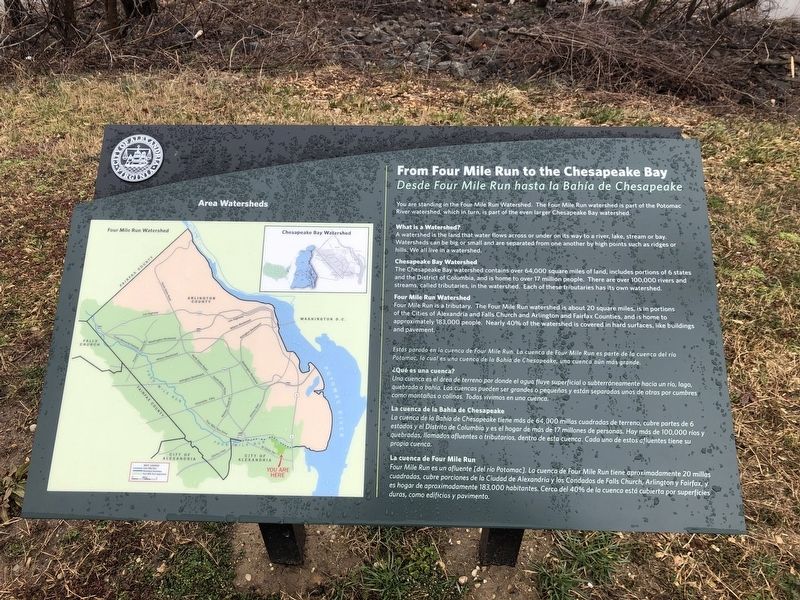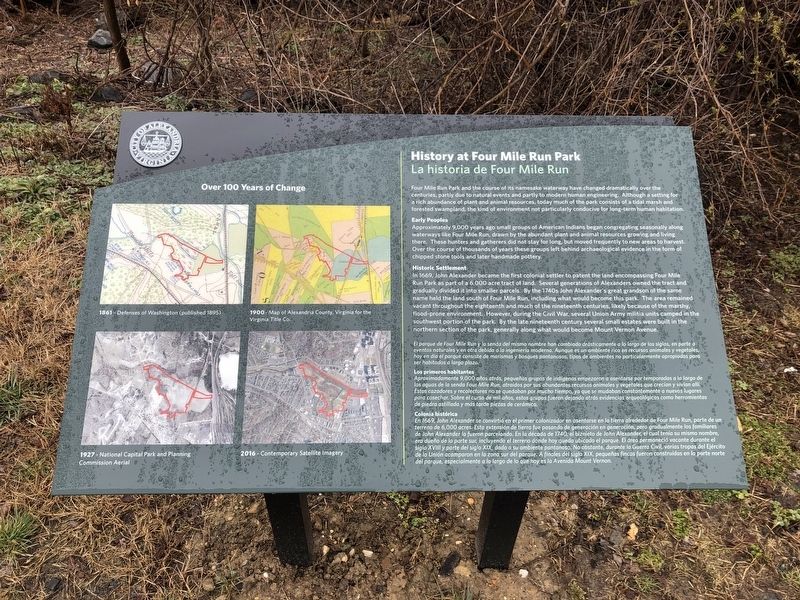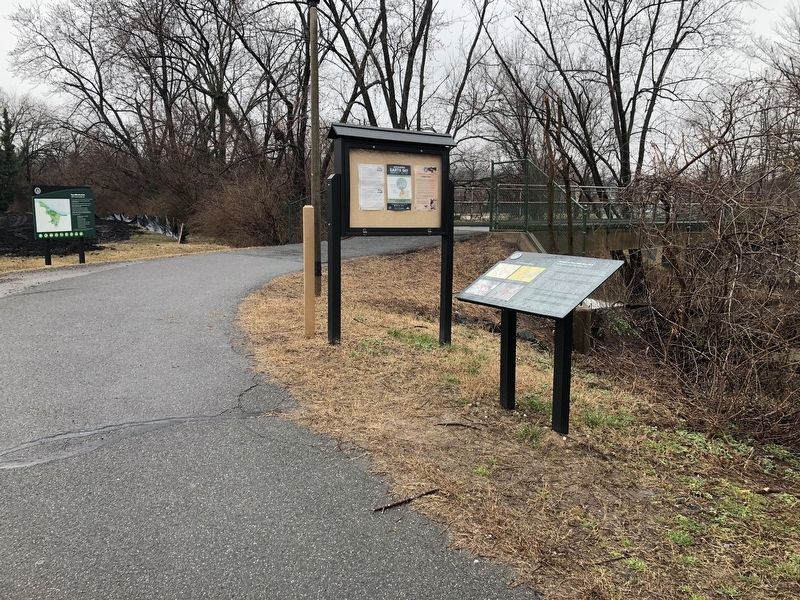Potomac West in Alexandria, Virginia — The American South (Mid-Atlantic)
History at Four Mile Run Park
La historia de Four Mile Run
Four Mile Run and the course of its namesake waterway have changed dramatically over the centuries, partly due to natural events and partly to modern human engineering. Although a setting for a rich abundance of plant and animal resources, today much of the park consists of a tidal marsh and forested swampland, the kind of environment not particularly conductive for long-term human habitation.
Early Peoples
Approximately, 9,000 years ago small groups of American Indians began congregating seasonally along waterways like Four Mile Run, drawn by the abundant plant and animal resources growing and living there. These hunters and gatherers did not stay for long, but moved frequently to new areas to harvest. Over the course of thousands of years these groups left behind archaeological evidence in the form of chipped stone tools and later handmade pottery.
Historic Settlement
In 1669, John Alexander became the first colonial settler to patent the land encompassing Four Mile Run Park as part of a 6,000 acre tract of land. Several generations of Alexanders owned the tract and gradually divided it into smaller parcels. The by 1740s John Alexander's great grandson of the same name held the land south of Four Mile Run, including what would become this park. The area remained vacant throughout the eighteenth and much of the nineteenth centuries, likely because of the marshy, flood-prone environment. However during the Civil War, several Union Army militia units camped in the southwest portion of the park. By the late nineteenth century several small estates were built in the northern section of this park, generally along what would become Mount Vernon Avenue.
Los primeros habitantes
Aproximadamente 9,000 años atrás, pequeños grupos de indígenas empezaron a asentarse por temporadas a lo largo de las aguas de la senda Four Mile Run, atraídos por sus abundantes recursos animales y vegetales que crecían y vivían allí. Estos cazadores y recolectores no se quedaban por mucho tiempo, ya que se mudaban constantemente a nuevos lugares para cosechar.
Colonia histórica
En 1669, John Alexander se convirtió en el primer colonizador en asentarse en la tierra de Four Mile Run, parte de un terreno de 6,000 acres. Esta extensión de tierra fue pasando de generación, pero gradualmente los familliares de John Alexander la fueron parcelando. En la década de 1740, el biznieto de John Alexander, el cual tenía su mismo nombre, era dueño de la parte sur, incluyendo el terreno donde hoy queda ubicado el parque. El área permanenció vacante durante el siglo XVIII y parte del siglo XIX, dado a su ambiente pantanoso. No obstante, durante la Guerra Civil, varias tropas del Ejército de la Unión acamparon en la zona sur del parque. A finales del siglo XIX, pequeñas fincas fueron construídas en la parte norte del parque, especialmente a lo largo de lo que hoy es la Avenida Mount Vernon.
Erected by City of Alexandria, Virginia.
Topics and series. This historical marker is listed in these topic lists: Civil Rights • Native Americans • Parks & Recreational Areas

Photographed By Devry Becker Jones (CC0), March 10, 2019
3. From Four Mile Run to the Chesapeake Bay
nearby nature marker
Location. 38° 50.393′ N, 77° 3.463′ W. Marker is in Alexandria, Virginia. It is in Potomac West. Marker can be reached from Commonwealth Avenue north of Luna Park Drive, on the left when traveling north. Touch for map. Marker is at or near this postal address: 3750 Commonwealth Avenue, Alexandria VA 22305, United States of America. Touch for directions.
Other nearby markers. At least 8 other markers are within walking distance of this marker. Dr. Betty Louise Josephson King (about 600 feet away, measured in a direct line); Four Mile Run and Flooding / The Restoration Project / I Live Here...Can You Find Me? / Public Art (approx. 0.2 miles away); Transportation (approx. ¼ mile away); The Columns of This Portico (approx. 0.3 miles away); Ruby Tucker (approx. 0.4 miles away); In Memory of an African-American Family (approx. half a mile away); Fort Scott (approx. half a mile away); Mount Vernon Trail (approx. half a mile away). Touch for a list and map of all markers in Alexandria.
Credits. This page was last revised on January 27, 2023. It was originally submitted on March 10, 2019, by Devry Becker Jones of Washington, District of Columbia. This page has been viewed 348 times since then and 30 times this year. Photos: 1, 2, 3. submitted on March 10, 2019, by Devry Becker Jones of Washington, District of Columbia.

